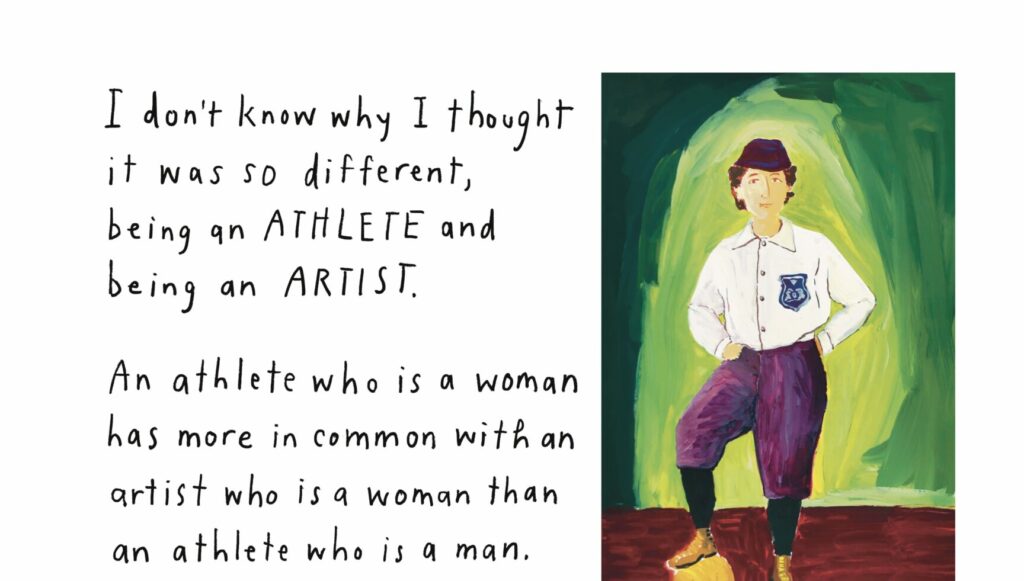April 5, 2024 / Esther Choy

Business women having a work lunch in a café, exchanging ideas and discussing their projects with a client. Young business team using a laptop as they sit around a coffee table.
Stereotypes are tied to deeply entrenched narratives that fail to capture a more complex truth. These oversimplified ideas are reinforced by one-sided stories. Case in point: The stereotypes that women are bad with money and that girls are bad at math perpetuates itself with a male-dominated investment industry. Today, 98.6% of all asset management firms in the U.S. are run by white men. Even though stories can reinforce stereotypes, telling different stories can undo these stereotypes and create a new and more balanced narrative. If you are interested in dismantling stereotypes, instead of focusing on negating the harmful stories, focus on creating new ones.
To dismantle stereotypes, we can:
- Engage new audiences with storytelling. Groups who have been alienated due to stereotypes can be reengaged through the use of stories
- Empower others to tell stories that offer counter narratives to stereotypes
- Use creativity to make memorable and impactful stories that challenge stereotypes
Here’s some examples of the ways storytelling is currently being used to dismantle stereotypes by thought leaders.
Engage New Audiences With Storytelling
“If you look at publications about money that are geared for women or for men, there’s a pretty big difference,” noted Sylvia Kwan, Chief Investment Officer of Ellevest, an investment firm focused on increasing women’s wealth. Articles for male audiences often discuss taking on risk, opportunity or potential, whereas financial articles targeting women readers discuss the problems women have with money. Kwan gave some examples she’s come across: “‘You’re spending too much on lattes, or buying too many shoes.”
“The investment industry just was, by default, built for men,” said Kwan. It’s no wonder women feel out of place when it comes to investing. At Ellevest, Kwan learned to engage women investors through storytelling. She sees how her clients light up when she tells stories about the impact of their investments. Women investors not only want to invest to build their wealth like their male counterparts. They want to invest to make a positive social, economic or environmental impact.
When she shares impact investing stories with her clients, “This light bulb goes on and they’re like, ‘Wow, I didn’t realize I could invest that way,’” Kwan said. By building a connection between her clients and their investments, women understand that they do indeed belong in conversations about investing.
Empower Others To Tell Stories
The more women start engaging with investing, the more they are likely to share their stories and experiences with investing. When women see other women talking about investing, doing the research, making the choices about their investment, it empowers them to believe they can do the same. They see themselves reflected in an industry where they have previously felt excluded. “The more women see themselves reflected in the stories,” Kwan shared, “whether it’s women investing, women starting businesses, women managing funds, women running investment firms, women investing in women, the more that [narrative] is going to change.”
Through her role at Ellevest, Kwan empowers women to take control of their own investments. By facilitating women to take the lead on their own finances she’s working to counter the stereotypes about women and money. These empowered women are demonstrating to other women that another story is available to them. With their actions, they are dismantling stereotypes.
Use Creativity To Double Your Impact
The new campaign by CoorDown is dismantling stereotypes about people with Downs Syndrome. The short film contains powerful imagery of a woman with Down Syndrome. She learns Shakespeare, lives independently, boxes, and dances in a club. Activities that directly contradict stereotypes about the limited abilities of people with Downs Syndrome.
To underscore these powerful images, the narrator repeats the phrase, “You assume that I can’t…” Playing on the commonly held idea that “making assumptions” is wrong, the film shows how assumptions limit people’s ability to live full lives.
But surprisingly, the film doesn’t ask the viewer to stop making assumptions. Instead, the narrator asks the viewer to make new assumptions: “Assume that I can, so maybe I will.” The surprise of turning assumptions into the powerful force to do good and support people with Downs Syndromes doubles the impact of the campaign. It’s a resonant and memorable tagline.
The Takeaway
The common thread of these three keys to dismantling stereotypes is this: The most effective way to dismantle stereotypes isn’t to focus on saying, “No, that’s not true.” That only repeats the misinformed narratives. Instead of focusing on negating the harmful stereotypes, focus on creating new stories. These stories will help your audience to imagine an alternative that questions and counters the stereotypes.
Better Every Story
"This is an amazing and insightful post! I hadn’t thought of that so you broadened my perspective. I always appreciate your insight!" - Dan B.
Join the thousands who receive Esther Choy’s insights, best practices and examples of great storytelling in our twice monthly newsletter.




